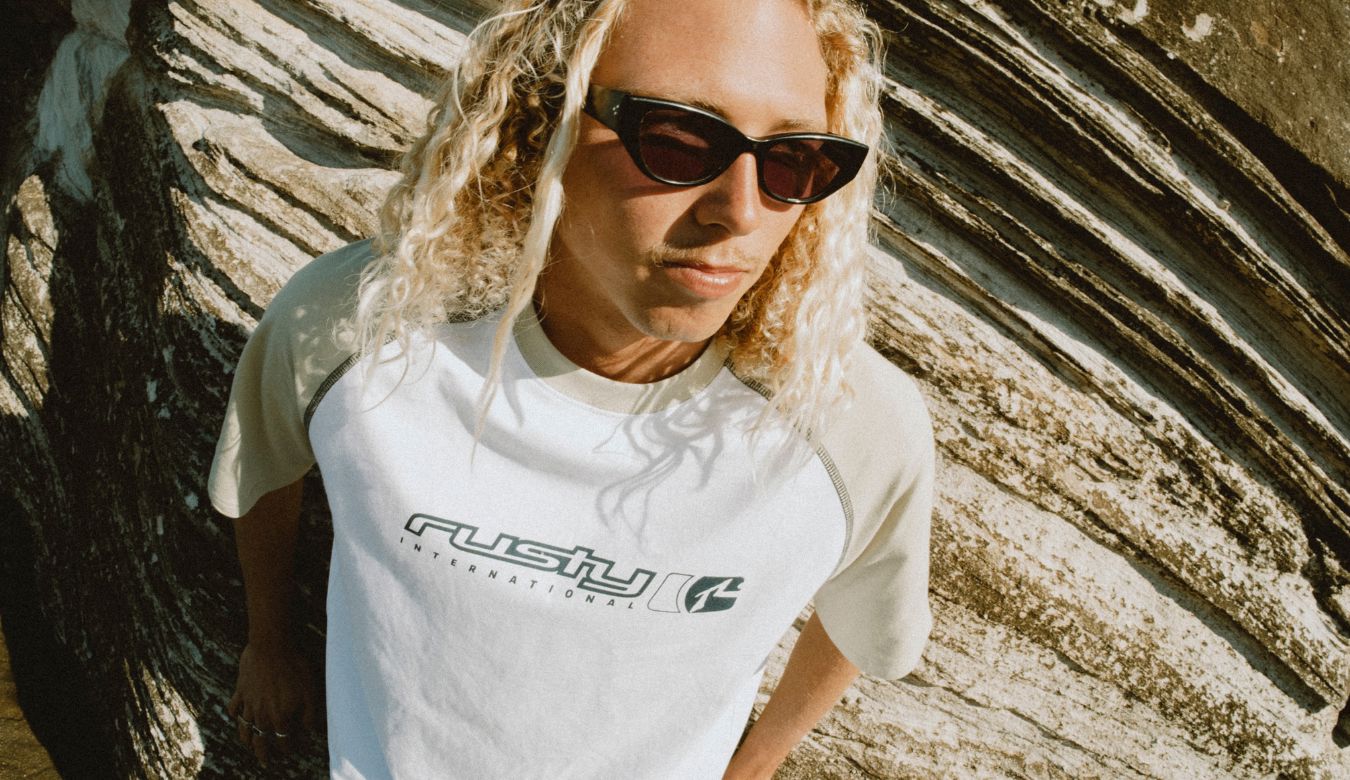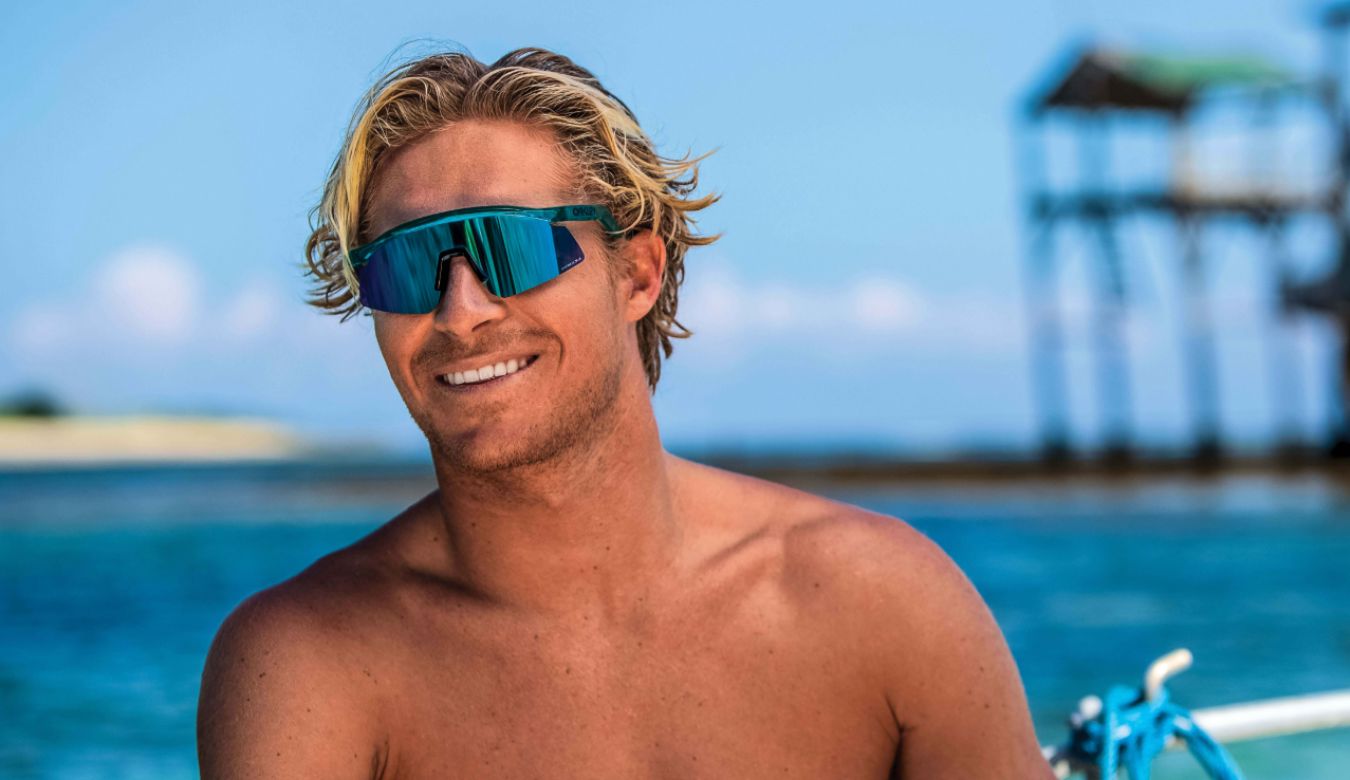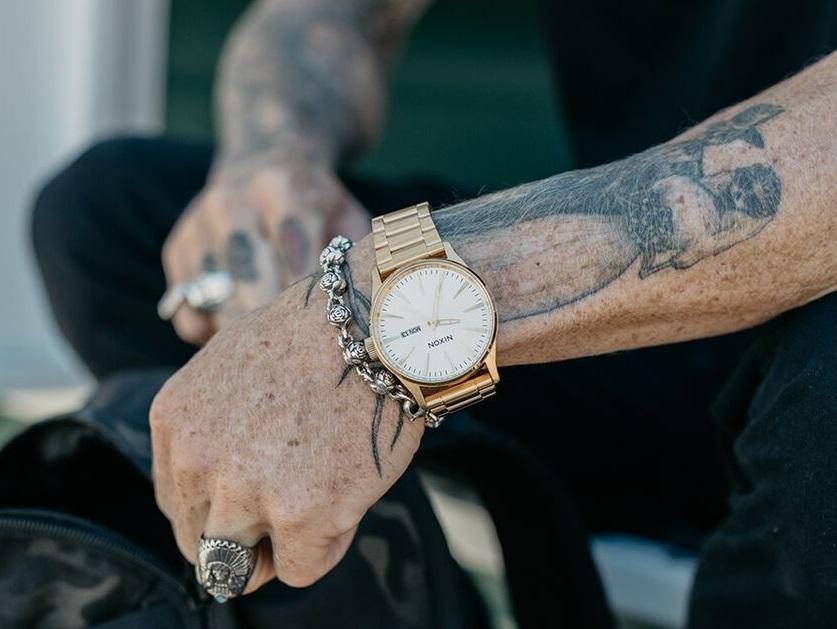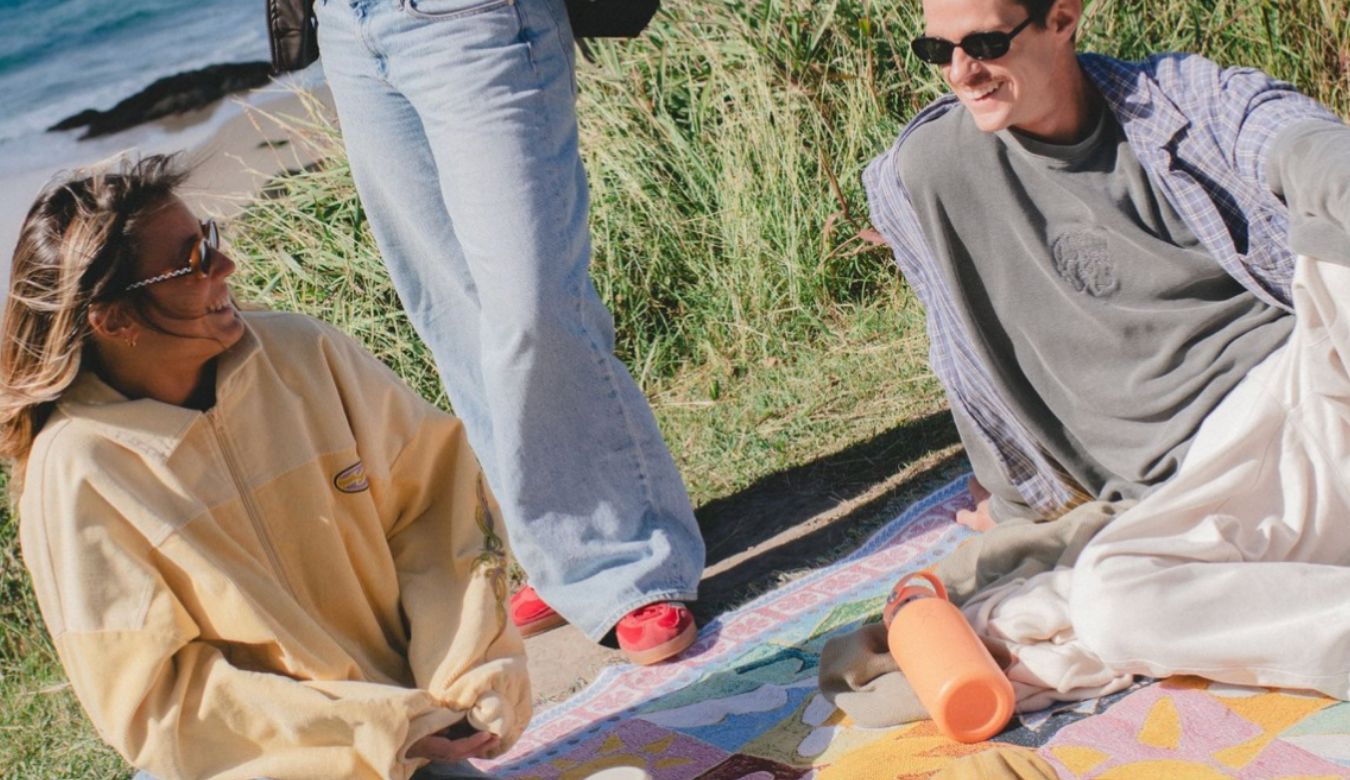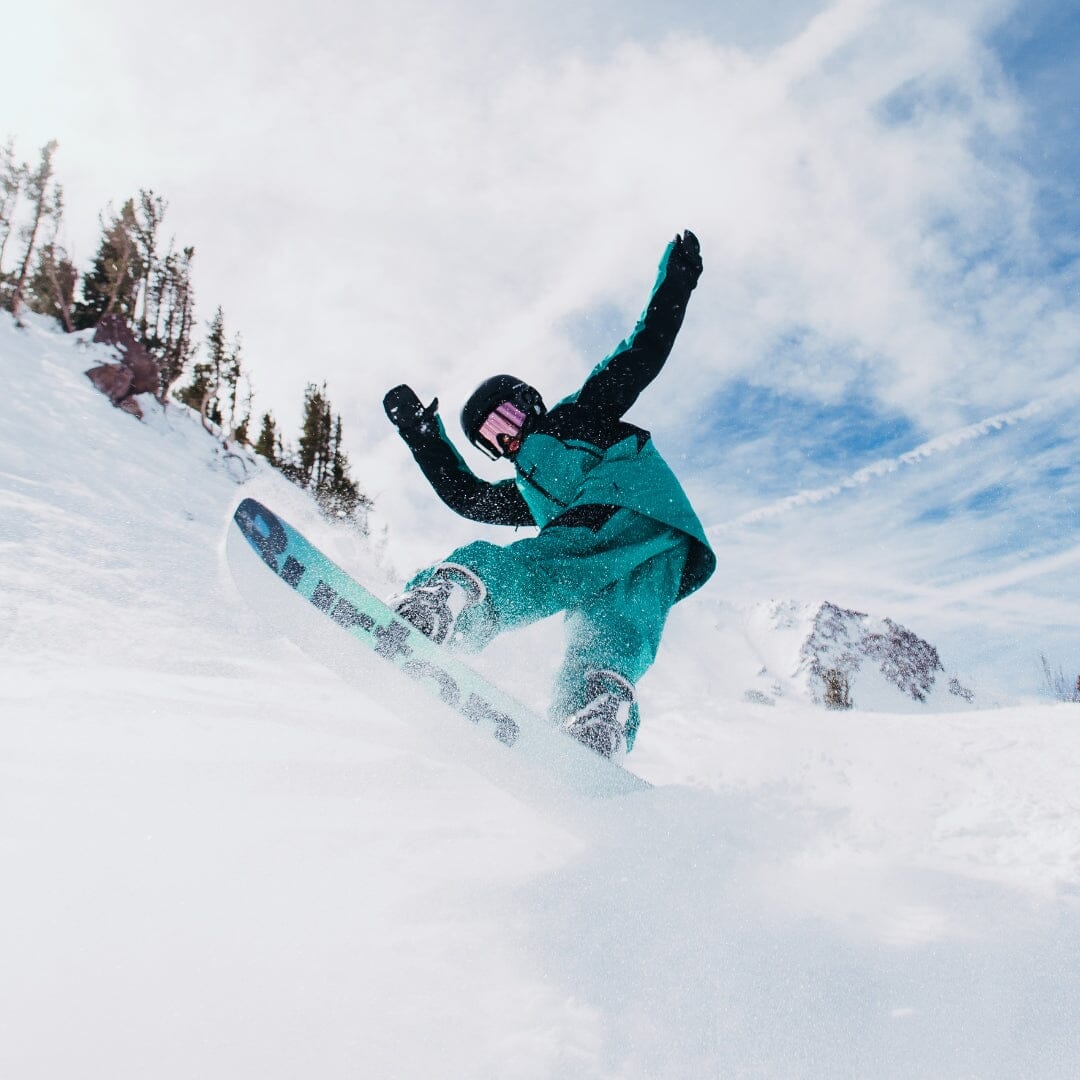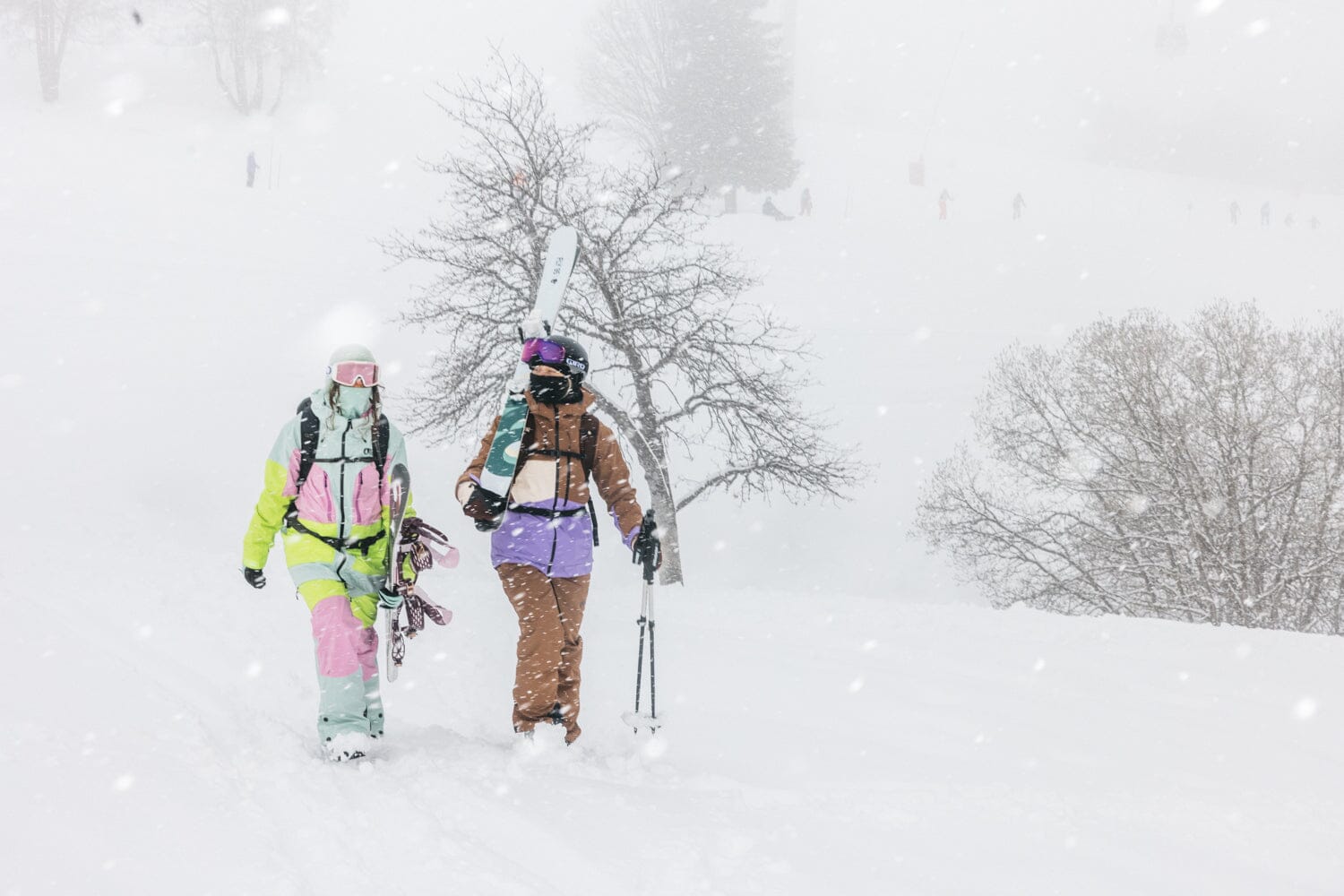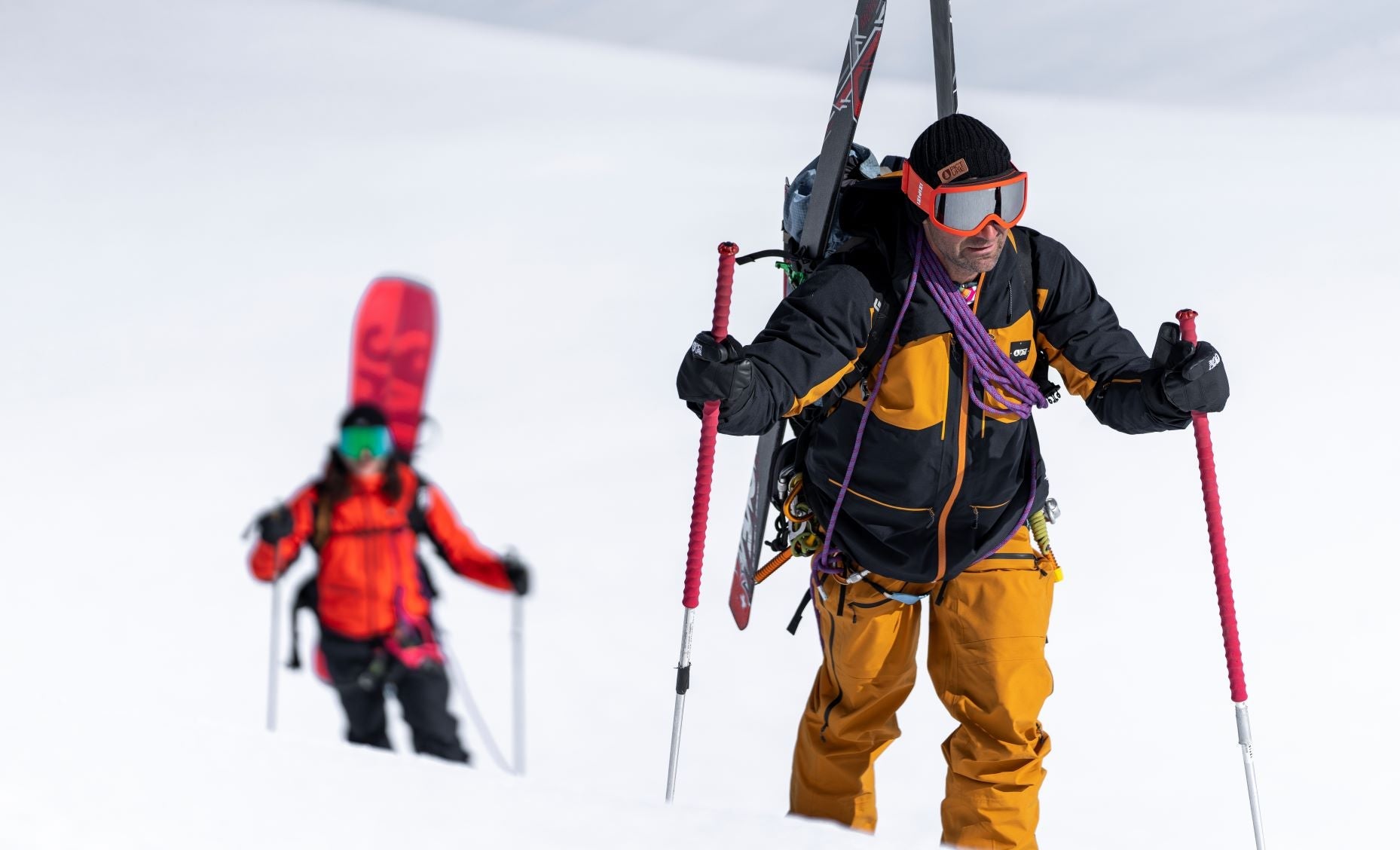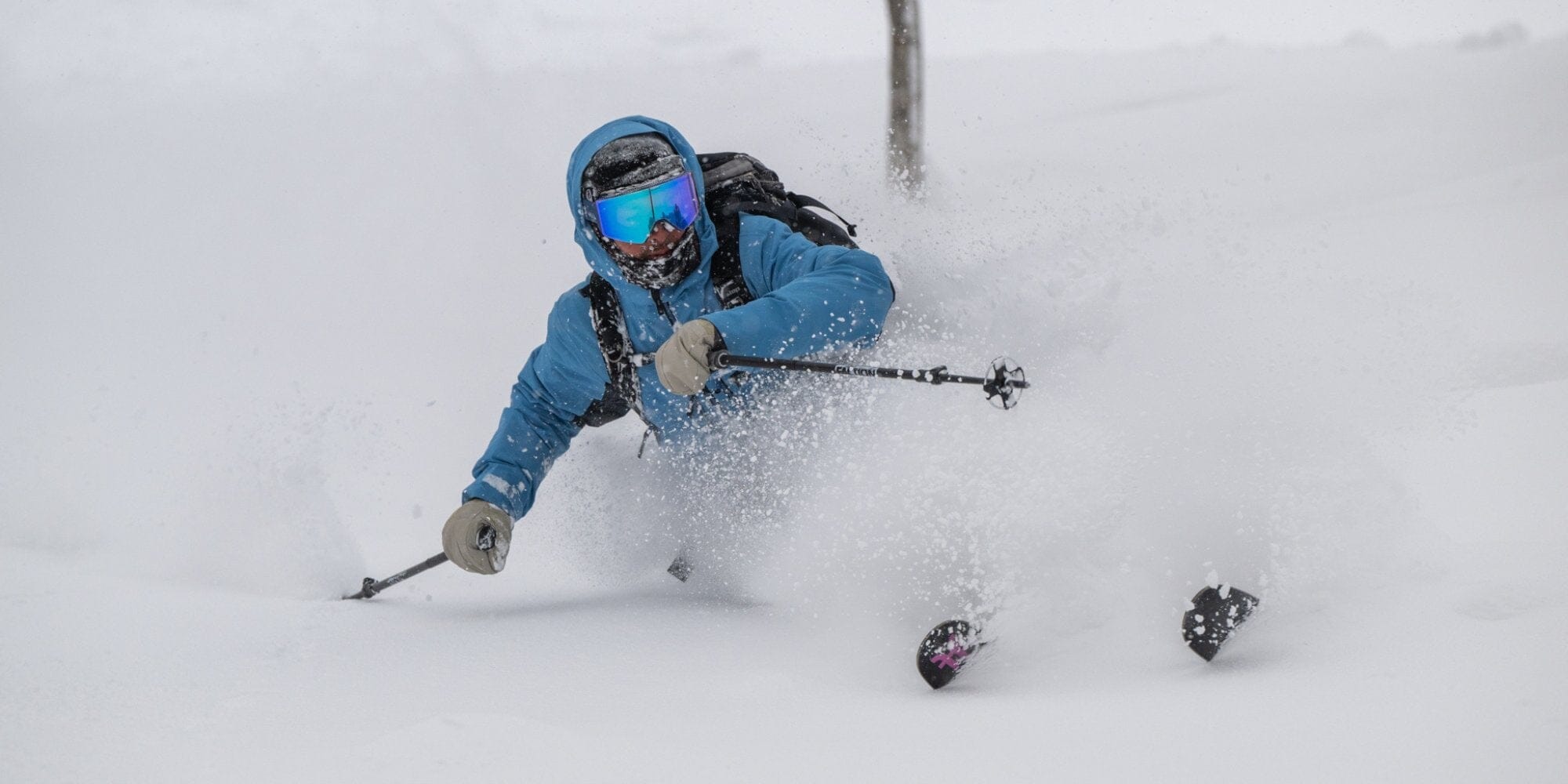Ski Touring Buyers Guide
SKI TOURING BUYERS GUIDE
Every season there are more and more skiers and snowboarders that are leaving the comfort and ease of the ski areas to head out and explore what the out of bounds mountains have to offer. No doubt the rewards are plentiful, with fresh untracked snow, new vistas to behold and an undeniable sense of freedom and one with nature for those who are willing to earn their turns and put in a bit of work.; Before you step out of your skis and start hiking though there are a few pieces of equipment you’re going to need to not only keep you safe out there but also make your trip a whole lot easier and more enjoyable.
Skis
Any ski can theoretically be set up for use in the backcountry, but touring specific skis designed specifically for backcountry use and usually feature lighter weight materials that make hiking uphill easier and more enjoyable.
Backcountry touring / ski mountaineering skis range from super featherweight trekking styles focused primarily on uphill mobility and speed, to more freeride focused models that offer similar dimensions and innovative rocker profiles as the newest inbounds skis. Along with a reduction in weight comes some sacrifice in other areas, usually in the ski’s ability to remain damp and chatter-free on hard snow or to resist impact damage to the base and edges. So if you’re not planning to spend the majority of your time hiking for untracked lines, you might be better off sticking with a slightly heavier and more versatile ski like the Rossignol Black Ops escaper or the Line Sakana.
Skins
Climbing skins that are attached to the base of the ski to travel uphill are a crucial part of the backcountry touring system. Most of our staff members use G3 and have found these to be the best balance for weight, reliability, and grip. Whichever brand you choose, make sure they have tip and tails attachments. Some older or cheaper models don't come with tail clips that prevent the skin from peeling off the ski and losing its adhesiveness to its base. Shop all skins HERE.
Bindings
Touring bindings allow the heel to move freely from the ski while you’re skinning uphill for an easier, more natural stride. When it’s time to ski down, the bindings lockdown in the heel. There are several types of touring bindings: lightweight tech bindings that are only compatible with AT boots with dimpled tech inserts, frame-style AT bindings that are compatible with traditional alpine boots, and hybrid bindings, which are a blend of the two with a tech toe and regular alpine binding heel.
Minimalist by design, tech bindings only work with ski touring boots with a tech-compatible heel and toe fittings. This binding style places a premium on stride efficiency and low weight, rather than adjustability or downhill performance. These bindings didn’t historically feature traditional DIN adjustment, but some new options are now introducing the technology.
Frame touring bindings accept boots with traditional alpine soles. They feature a frame that encompasses the boot that can be released for the ascent and then locked down for skiing. Downhill performance of many of these frame bindings is comparable to that of standard alpine bindings. However, this advantage comes with increased weight—which will be felt on the skin track.
Hybrid bindings accept boots with tech-compatible toe fittings but typically have a traditional alpine heelpiece. The Marker Kingpin has led the way in this category for many years but new options such as the Salomon or Armada Shift binding offer the tech toe piece for the superior uphill performance but then morph to offer a standard alpine toe cup for superior downhill performance. Shop all ski touring bindings HERE.
Boots
Touring boots feature a walk mode that allows the cuff to pivot freely for a better range of motion when you’re hiking and skinning. They also usually include grippy rubber soles and lightweight shell material to make the ascent easier. The newest generation of AT boots such as the Nordica Strider 130 or K2 Mindbender 120 are highly attuned to downhill performance as well.
Be sure you are getting boots that are compatible with your bindings. A true alpine touring boot’s sole is generally only compatible with pin-style tech bindings and some frame bindings that feature an adjustable toe height. Some traditional alpine ski boots such as the Salomon QST range, however, can be fitted with removable sole blocks (sold with boots or available separately) to make them swap-able between alpine, frame AT and pin-style AT bindings. Shop all ski boots HERE.
Poles
Backcountry ski poles are essentially the same as your regular ski poles, but they ideally will have an adjustable length to adapt to changing terrain. For example, you may want them longer than normal for flat terrain for increased leverage and shorter when you’re ascending steeper terrain for stability.
Avalanche Transceiver
Your avalanche transceiver or beacon is one of the most essential parts of your backcountry equipment. It sends out a signal that can be picked up by other transceivers in the event you are buried in an avalanche. Likewise, if your mountain partner is buried, your transceiver will be able to detect their signal. When testing transceivers, we looked for ones that were user friendly, easy to use and had 3 antennas. This helps with pinpointing the strongest signal in the shortest amount of time. From personal experience testing numerous transceivers, we can recommend the BCA Tracker 3 and the Arva Neo Plus. Shop all transceivers HERE.
Shovel
A good shovel is a multifunctional tool that allows you to dig out your partner in the event of an avalanche along with being used to create snow pits to check snow stability. It can also help create a snow shelter in an emergency, build a kicker in the backcountry and dig out your car should you ever get stuck. A shovel with a collapsible design and metal blade is the way to go for both reliability and durability. G3, BCA, and Arva do some great models that fit the bill. Shop shovels HERE.
Probe
An avalanche probe is part 3 of your essential backcountry requirements (Beacon, Shovel, and Probe) A good probe is lightweight, durable and folds up small. When in doubt, go with something longer at over 3 meters. Shorter may be lighter but the last thing you want is not being able to reach your partner under the snow because your probe is too short. Shop probes HERE.
Backcountry Ski Pack
A backcountry pack will differ from a resort pack in a few ways. The main difference will be the size; you’ll need to fit everything you need for a day in the backcountry in there. A separate pocket for your avalanche equipment is great and will aid in speedy access to your shovel and probe if needed. I like to strap my poles to the outside of my pack, that way they are easily accessible should I need them. Look for packs with a well-designed layout and a good ski carry system for boot packing along ridgelines.
Warm Layers
Even if you’re not planning on wearing it, having a good insulated or heavy merino layer in your backpack is always a great idea. They don’t weigh much or take up allot or space but the weather in the mountains can change quickly so it’s always good to be prepared. The Mons Royale Arete is my personal choice as it is warm even when wet due to the merino fill. Shop layers HERE.
My Ski Touring Kit
Ski: Line Sakana
Bindings: Salomon Shift
Boots: Full Tilt Ascendant
Skins: G3 Universal
Poles: Line Pollards Paintbrush
Jacket: Volcom L Gore-Tex Jacket
Pants: Volcom Aston Gore-Tex Pant
Mid Layer: Mons Royale Arete Hood
Gloves: Pow Stealth Mitt
Goggles: Smith IO Mag
Helmet: Smith Code
Pack: Cactus Patrol
Avalanche Beacon: BCA Tracker 3
Probe: G3 Speedtech 320
Shovel: G3 Avitech


